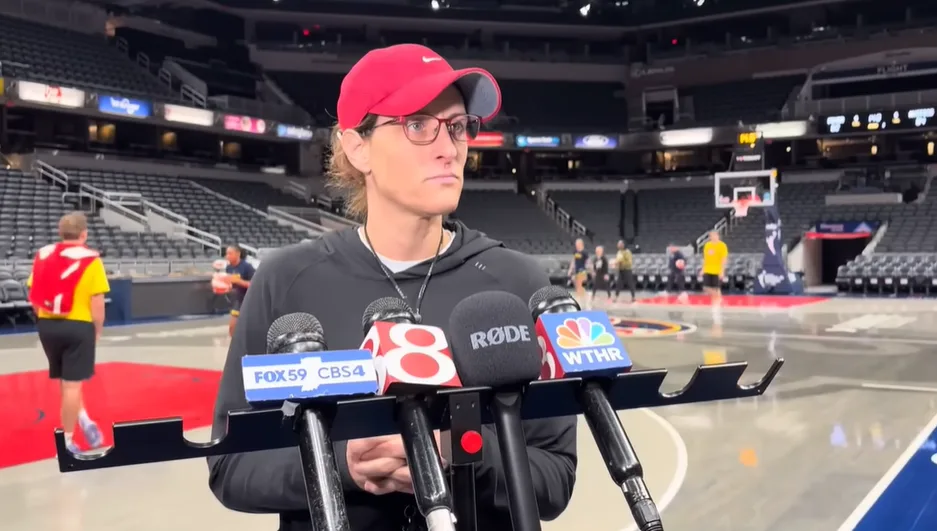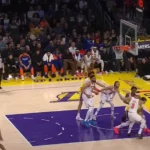A Veteran’s Return: Odyssey Sims Stays with the Fever
On August 24, 2025, the Indiana Fever signed point guard Odyssey Sims to her third 7-day hardship contract in order to keep her with the team amid injury issues (IndyStar, 2025).
- A Veteran’s Return: Odyssey Sims Stays with the Fever
- Who Is Odyssey Sims? A Look at Her Career
- Why the Fever Needs Sims
- The 7-Day Contract Rule: A Brief History
- Stats Spotlight: Sims’ Current Impact
- Human Commentary: A Story of Resilience
- The Fever’s Bigger Picture
- The Economics of WNBA Roster Building
- Historical Context: Veterans and the WNBA Lifecycle
- Looking Ahead: What’s Next for Sims and the Fever?
- Conclusion: More Than Just a Contract
Sims, a former All-Star and a 31-year-old who was recruited to stabilize the backcourt of the Fever following a spate of injuries that has affected the team, was used following an injury to Tamika Catchings, who is the main force of the team. Although such short-term contracts may appear insignificant on paper, they are a (loud) testimony to the long-range talent of Sims as well as to the precarious position modern WNBA teams find themselves in as they pursue a balance between depth, injury, and salary cap.
Who Is Odyssey Sims? A Look at Her Career
Odyssey Sims has been a household name in women’s basketball for over a decade. A standout at Baylor University, she was the 2014 Big 12 Player of the Year and a top WNBA draft pick. Sims went on to play for the Los Angeles Sparks, Minnesota Lynx, Atlanta Dream, and Dallas Wings before her latest stint with the Fever (ESPN, 2024).
Career highlights include:
- WNBA All-Star (2019)
- Over 3,000 career points scored
- Consistent averages of 10+ points and 4 assists per game across multiple seasons (Basketball Reference, 2025)
Her playstyle has always combined aggressive drives, playmaking vision, and defensive grit. For Indiana, Sims represents stability at a time when the roster desperately needs it.
Why the Fever Needs Sims
The Fever was optimistic as the 2025 WNBA season started with a young star, Caitlin Clark, who became the number one pick and caused significant interest and ticket sales (Sports Illustrated, 2025). The backcourt has had it troubles in the form of injuries. Erica Wheeler and Lexie Hull are just two vets who have been out for a significant time, forcing IU to scramble up for ready hands to handle the ball.
Sims has stepped in to:
- Provide veteran leadership on and off the floor
- Run the offense when Clark sits or shifts off the ball
- Mentor younger guards in handling defensive pressure
Her presence has not only kept the Fever competitive but also added maturity to a team trying to balance development and winning.
The 7-Day Contract Rule: A Brief History
To understand the significance of Sims’ signing, one must understand the 7-day contract rule.
- The WNBA allows teams to sign players to short-term hardship contracts when injuries leave them with fewer than 10 healthy players (WNBA, 2024).
- These contracts last only seven days but can be renewed multiple times.
- The rule exists to ensure competitive balance without forcing teams to make permanent roster cuts.
Historically, these contracts have provided opportunities for veterans to showcase that they still belong or for young players to prove themselves. Sims’ situation underscores the growing reliance on this rule as the league expands and schedules intensify.
Stats Spotlight: Sims’ Current Impact
Since joining the Fever this summer, Sims has made steady contributions:
- Averaging 7.8 points, 3.2 assists, and 2.1 rebounds per game in limited minutes (Basketball Reference, 2025)
- Shooting an efficient 44% from the field, proving she can still create offense
- Posting a positive plus-minus in several close contests
While not putting up superstar numbers, Sims is filling the exact role Indiana needs—a steady hand in a turbulent season.
Human Commentary: A Story of Resilience
What makes Sims’ story so convincing is not only her figures, it is her strength. It is in a league where there are few roster spots and where young talent is continuously rising to the surface; the veterans often find themselves at the peripheries. But Sims has battled her way back into prominence, showing that experience is not completely useless anymore.
To fans, her presence creates a nostalgic feeling because this is a player who has challenged the greatness of people like Sue Bird and Diana Taurasi. To the Fever, it means dependability. And in the case of Sims herself, it is an opportunity to demonstrate that there are some chapters remaining to her basketball career.
The Fever’s Bigger Picture
Indiana’s season is about more than just wins and losses. It’s about building a foundation. Caitlin Clark may be the face of the franchise, but surrounding her with veterans like Sims ensures that growth happens in the right direction.
The Fever is:
- Top 5 in league attendance this season thanks to Clark’s arrival (CBS Sports, 2025)
- Hovering around the playoff bubble, where every game matters
- Experimenting with lineups that balance youth and experience
Sims’s presence contributes directly to this developmental arc, making her signing more impactful than a typical short-term move.
The Economics of WNBA Roster Building
It is also because of the financial realities of the WNBA that the decision was made to keep Sims on 7-day deals. That cap is set to hit only 1.46 million in 2025 (Spotrac, 2025), so teams will have to consider carefully how aggressive they want to be with long-term star contracts, rookie contracts, and depth players.
Short-term contracting removes long-term contractual agreements, but also the flexibility. Questions are also raised: Should veterans such as Sims be more stable? Are such contracts a fair trade-off in an expanding league that is still finding the right balance of revenue and expenses?
Historical Context: Veterans and the WNBA Lifecycle
This is not the only situation of the Sims. This was true even of veterans, many of whom came to a crossroads at the end of their careers: Alana Beard, Swin Cash. Others went into the coaching or front-office side. Others, such as Sim,s continued working to be on rosters.
This problem is increased by the format of the WNBA, with only 12 teams. Each hand is not a penny; the roster spots are limited across 150-odd players in the league. Players like Sims know that as long as they are well-prepared when an opportunity comes, then it is part of the grind.
Looking Ahead: What’s Next for Sims and the Fever?
While Sims is signed for only seven more days, her impact may earn her a longer look. If Indiana continues to hover around the playoff picture, keeping a steady veteran point guard makes sense.
For Sims, the future could unfold in several ways:
- Another 7-day renewal, keeping her role intact
- A rest-of-season contract if roster flexibility allows
- Or potentially a transition into coaching, given her experience and leadership qualities
No matter the outcome, this chapter with the Fever proves she still belongs in the league.
Conclusion: More Than Just a Contract
When the Indiana Fever re-signed Odyssey Sims, it was not just about filler. It is really about resilience, and it is also about leadership and the depth of experience in a young league that is just finding itself.
The story is indicative of how the game of professional women’s basketball is today, with few chances, but through perseverance, dreams are not crushed. To the Fever, she is stabilizing. To the fans, it is motivational. And to the WNBA, it reminds them that in every contract, there is a story.





